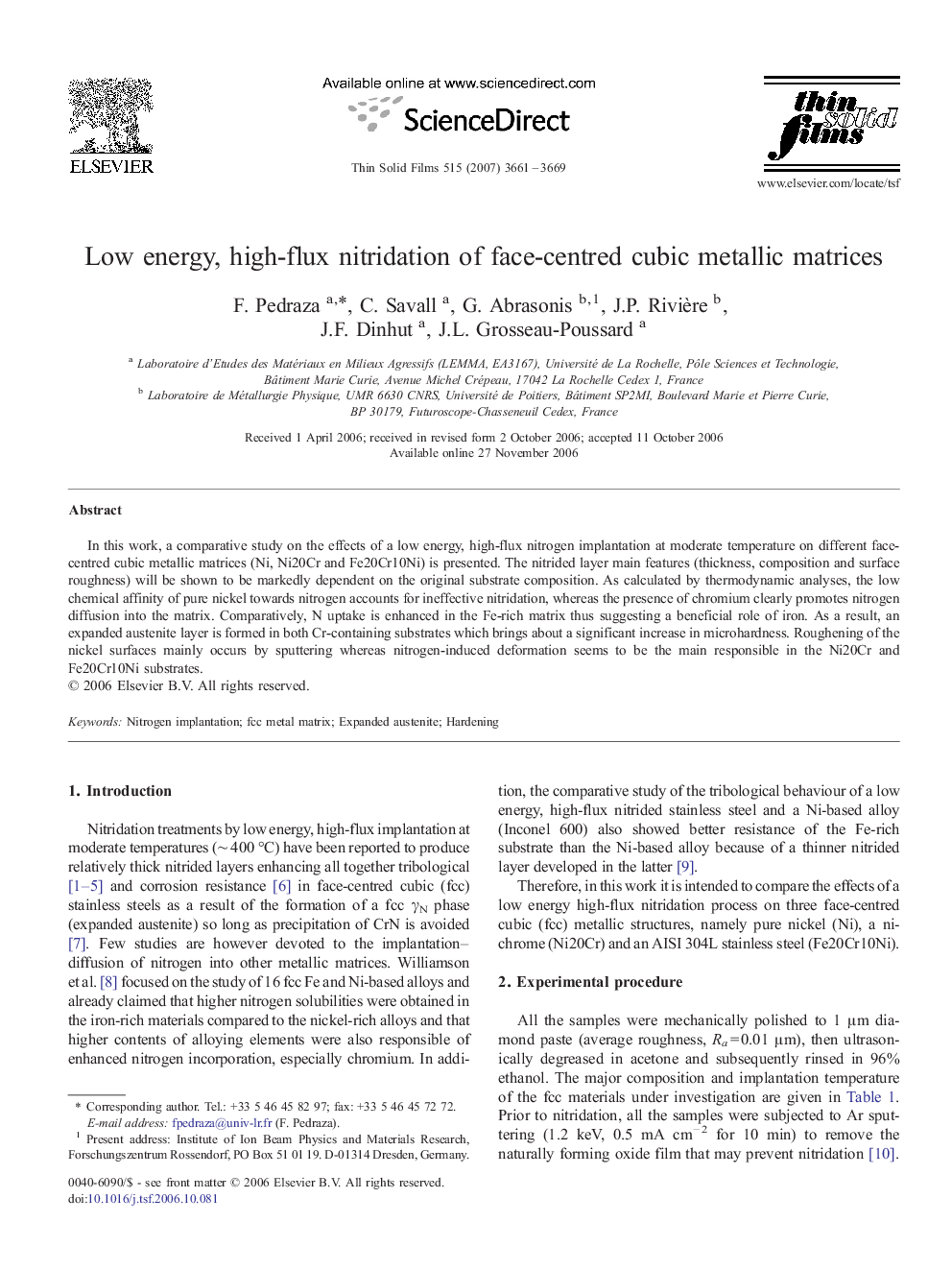| Article ID | Journal | Published Year | Pages | File Type |
|---|---|---|---|---|
| 1673010 | Thin Solid Films | 2007 | 9 Pages |
Abstract
In this work, a comparative study on the effects of a low energy, high-flux nitrogen implantation at moderate temperature on different face-centred cubic metallic matrices (Ni, Ni20Cr and Fe20Cr10Ni) is presented. The nitrided layer main features (thickness, composition and surface roughness) will be shown to be markedly dependent on the original substrate composition. As calculated by thermodynamic analyses, the low chemical affinity of pure nickel towards nitrogen accounts for ineffective nitridation, whereas the presence of chromium clearly promotes nitrogen diffusion into the matrix. Comparatively, N uptake is enhanced in the Fe-rich matrix thus suggesting a beneficial role of iron. As a result, an expanded austenite layer is formed in both Cr-containing substrates which brings about a significant increase in microhardness. Roughening of the nickel surfaces mainly occurs by sputtering whereas nitrogen-induced deformation seems to be the main responsible in the Ni20Cr and Fe20Cr10Ni substrates.
Related Topics
Physical Sciences and Engineering
Materials Science
Nanotechnology
Authors
F. Pedraza, C. Savall, G. Abrasonis, J.P. Rivière, J.F. Dinhut, J.L. Grosseau-Poussard,
